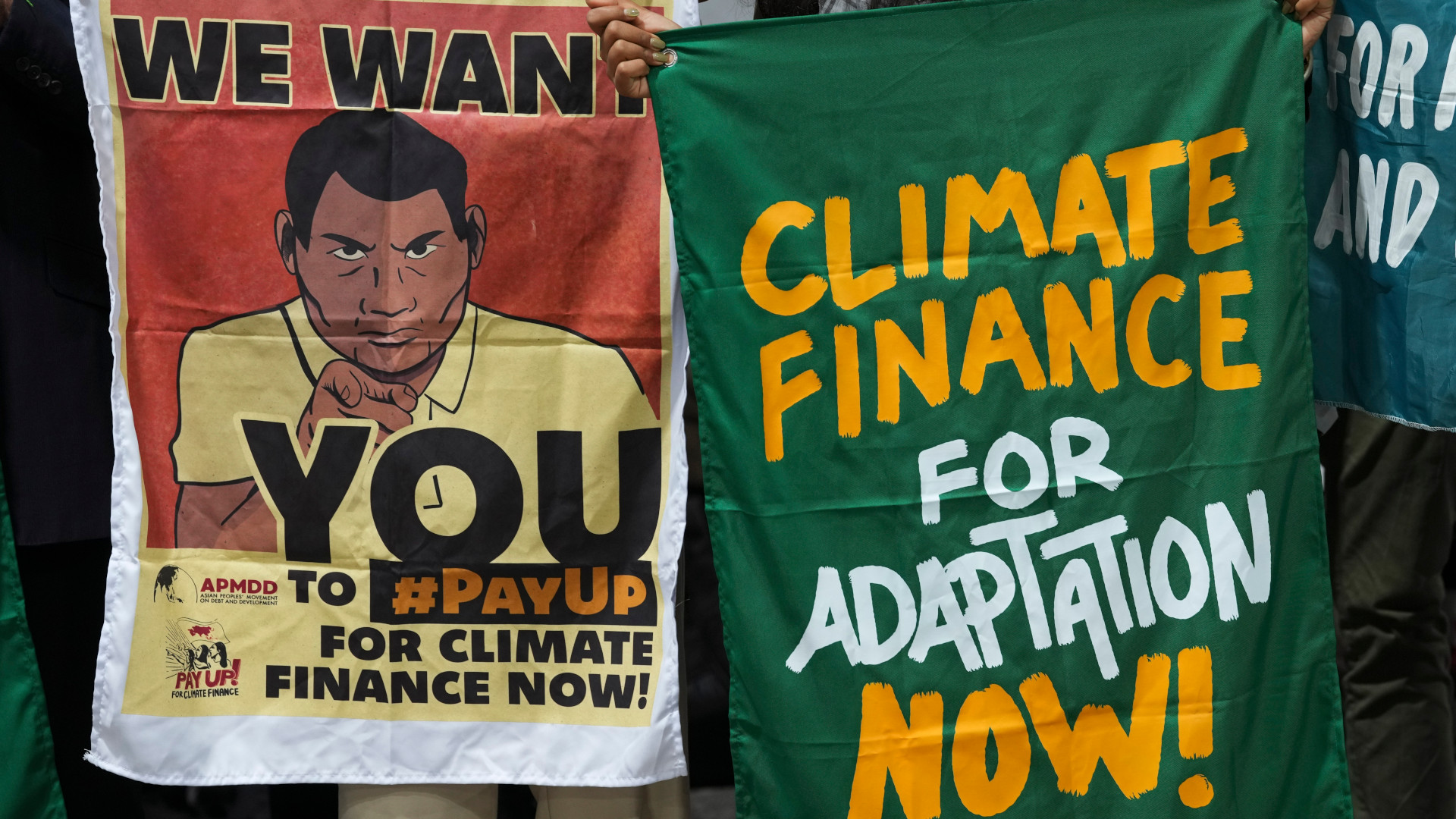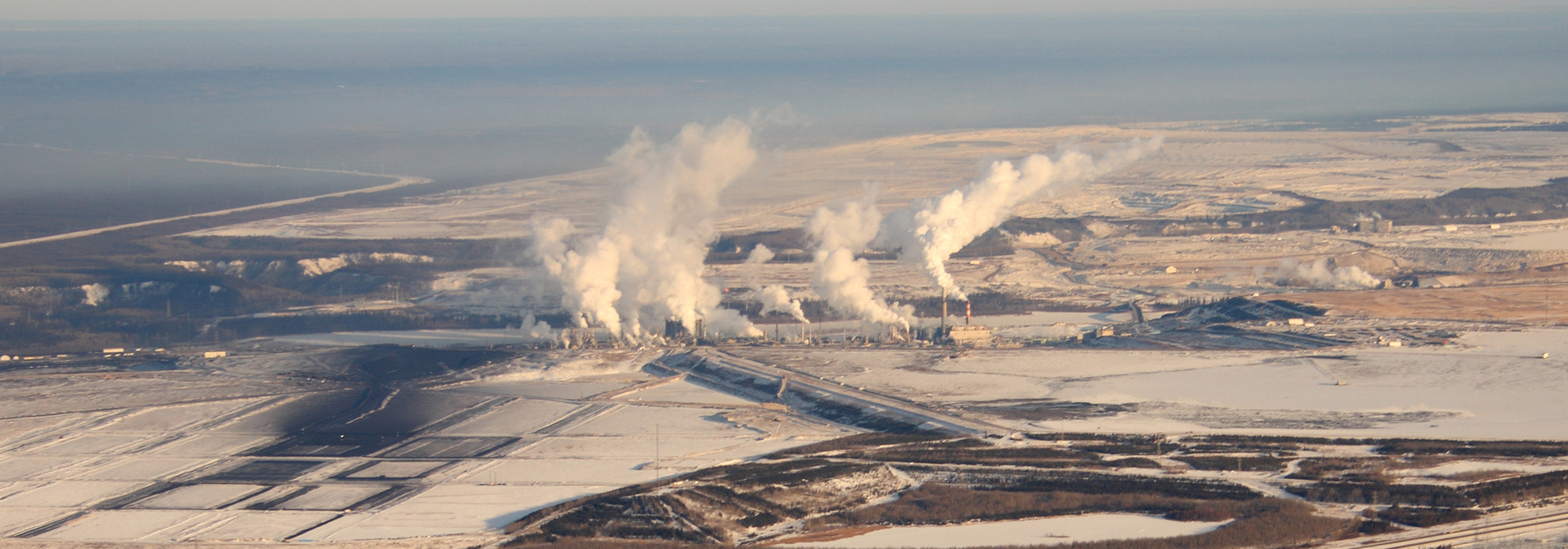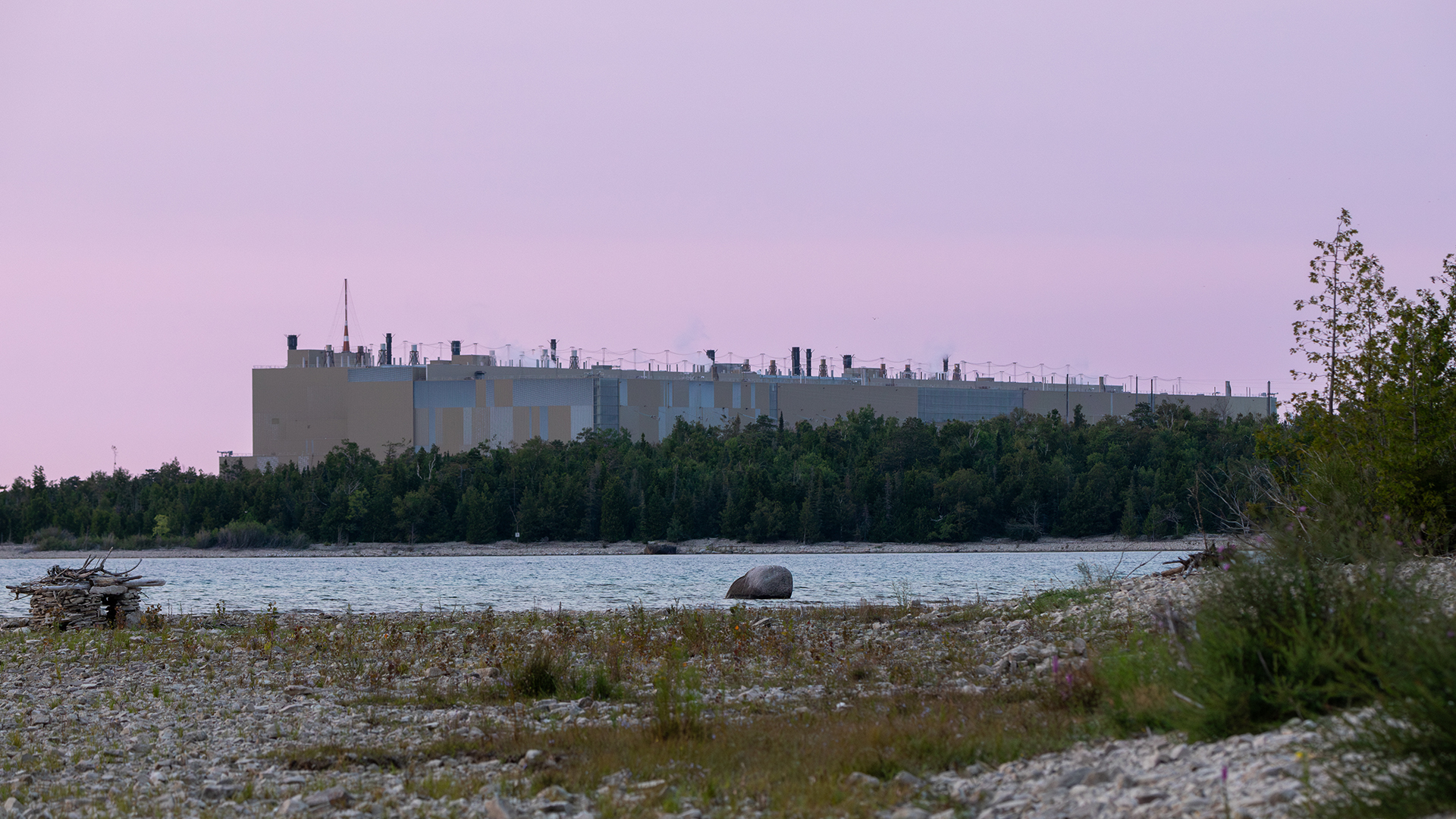
The latest report of the UN Intergovernmental Panel on Climate Change (IPCC) erases any doubts about the inadequacy of incremental action on climate.
In that context, Canada’s gradual approach to climate policy has been exposed as a feckless failure. Rapid, unprecedented and systemic changes in how governments, industries and societies function are required to limit global warming to 1.5ºC above preindustrial levels. Failure to do so could prove catastrophic.
Greenhouse gas (GHG) emissions caused by human activity have already warmed the planet by as much as 1.2ºC above the preindustrial norm. Warming of 1.5ºC will produce more severe heat waves and more extreme storms and flooding – which is saying something given the extreme weather we’re already witnessing.
Warming above 1.5ºC is truly alarming. Ten million people will be exposed to permanent inundation, and hundreds of millions more will be susceptible to climate-related poverty. Malaria and dengue fever will increase, while maize, rice and wheat crop yields will decline. At 2ºC of warming, the consequences are graver. Approximately 18 percent of insects, 16 percent of plants, and 8 percent of vertebrates will lose their habitats. The global annual catch from marine fisheries will decline by 3 million tonnes. Nearly all (99 percent) of coral reefs will die off. The cri de coeur of the climate-threatened Alliance of Small Island States –“1.5 to Stay Alive”– is now a global scientific truism.
What does this mean for Canada’s two most important climate policies: its highly controversial proposals for a national carbon price and a new environmental assessment process for natural resources projects? Neither, it turns out, is capable of contributing to the rapid, unprecedented and systemic changes urged by the IPCC.
Canada buries its head in the (oil) sands
Asked whether Canada will increase the ambitions of its climate policies in light of the IPCC’s report, Minister of Environment and Climate Change Catherine McKenna said that Canada must first meet the commitments it has already made under the Paris Agreement, including its unambitious Harper-era target of reducing GHG emissions from 2005 levels by 30 percent by 2030.
But Canada isn’t even remotely on track to meet its 2030 target (neither is any other major industrial country). Nor does Canada have a plan to meet its target. An audit of Canada’s climate policies by the Commissioner of the Environment and Sustainable Development concluded that meeting the 2030 target “will require substantial effort and actions beyond those currently planned or in place.”
Meanwhile, the federal government has purchased the Trans Mountain Pipeline Expansion Project, which will facilitate further oil sands development and increase GHG emissions. It also supports British Columbia’s approval of LNG Canada, a liquefied natural gas pipeline and marine terminal megaproject that will completely undermine the province’s own climate plan.
Instead of beginning – much less accelerating – the transition toward decarbonization, Canada is prolonging the world’s unsustainable addiction to fossil fuels. The current rate of extracting and burning fossil fuels risks global warming of 4ºC. The IPCC report states that to prevent this calamity, the world must reduce global GHG emissions by 45 percent from 2010 levels by 2030, and achieve net-zero emissions by 2050. “The next few years,” says Debra Roberts, cochair of the IPCC’s working group on climate impacts, adaptation and vulnerabilities, “are probably the most important in our history.”
The price is wrong
The IPCC estimates that limiting warming to 1.5ºC requires far higher carbon prices than are presently in place. It predicts that by 2030, the global average price will need to range between US$135 and US$5,500 per tonne.
In Canada, there is growing opposition to the federal government’s plan to begin pricing carbon emissions nationally at a meagre $20 per tonne (subject to watered-down exemptions for trade-exposed heavy emitters) in January 2019, with the price rising to $50 by 2022. Detractors include Saskatchewan, Ontario and possibly New Brunswick. Alberta has withdrawn from the federal plan and cancelled its own plans for scheduled increases above $30. Meanwhile the leader of the province’s United Conservative Party, Jason Kenney, has signalled that if elected in 2019 he will get rid of carbon pricing altogether. Manitoba, which had proposed a flat price of $25 per tonne, has rescinded its plan and indicated that it will join Saskatchewan and Ontario in challenging the constitutional validity of the national price.
These detractors claim that pricing carbon will raise consumer prices and put jobs at risk – and all for nothing, they say, because pricing carbon does not lower emissions. They say the carbon tax “does nothing for the environment.” In a revealing interview, federal Conservative Leader Andrew Scheer was asked how he would refute the argument of economist Paul Romer (who recently shared the Nobel Prize in Economics) that pricing carbon is the solution to climate change. Scheer responded that the “empirical evidence” shows that where a carbon price has been implemented, it hasn’t had the desired effect.
The detractors are right: Carbon pricing hasn’t reduced emissions fast enough to meet the Paris Agreement targets. But the detractors are also being disingenuous. Carbon pricing isn’t working because the prices imposed around the world remain far too low to alter the incentives around supply and demand. The only reasonable conclusion to draw from this evidence is that carbon prices must be raised, not scrapped altogether.
But Canada’s carbon price defenders play right into the detractors’ hands by refusing to argue for a higher, more effective price. Canada’s Ecofiscal Commission, for example, observes that we now have the benefit of “45 working examples of carbon pricing around the world” and that we know carbon pricing “reduces emissions over time.”
That’s true as far as it goes, but it doesn’t go nearly far enough, fast enough. The IPCC’s report is so startling because it makes clearer than ever before that we’re rapidly running out of time to prevent catastrophic climate change. William Nordhaus (who shared the recent Nobel Prize in Economics for his work on carbon pricing) argues that the world’s climate policies, including carbon prices, “are lagging very, very far – miles, miles, miles – behind the science and what needs to be done.”
Yet the Globe and Mail’s editorial response to the IPCC’s report also struck a gradualist tone. The Globe called the proposal of “some environmentalists” to raise the price immediately “too politically risky.” The current plan, it says, “is a good start.” But the government’s own emissions data plainly say otherwise. Not only does this rhetoric undermine the urgency of the IPCC’s warning, it also bolsters the detractors’ argument that the current plan “will do nothing for the environment.”
Response to the UN sustainable development agenda
The IPCC urges us to pursue the UN’s 2030 Agenda for Sustainable Development to ensure that climate mitigation doesn’t exacerbate inequality and poverty. Here, again, Canada is moving far too slowly.
In her spring 2018 audit, the Environment and Sustainable Development Commissioner found that the federal government hasn’t conducted meaningful national consultation on the 2030 Agenda. Nor has it created a system to measure, monitor and report on progress. In short, we have no plan.
Historically, Canada has attempted to balance the competing interests of economic development, environmental protection, and social and cultural concerns (not the least of which are the rights and interests of Indigenous peoples) through its environmental assessment framework. A few notable exceptions aside, our assessment processes have overwhelmingly prioritized economic development over all other considerations.
To remedy this deficiency, the federal government tabled Bill C-69, which includes a new Impact Assessment Act to replace the Harper-era Canadian Environmental Assessment Act, 2012.
But Bill C-69 has proven just as controversial as carbon pricing. Suits and Boots, a self-described “grassroots organization” created to defend Canada’s (nonrenewable) resources sector, launched a campaign called Kill Bill C-69. The campaign’s reasons for opposing the bill are as outlandish as the popular movie that its name recalls. Its most fanciful claim is that Bill C-69 transforms Canada’s voluntary climate commitments into legally binding obligations, whereas the bill requires only consideration of those commitments. As Minister McKenna has acknowledged, the government would still have approved Trans Mountain under Bill C-69, thus confirming that our climate commitments don’t require compliance; mere consideration will suffice.
While defenders of Bill C-69 have easily refuted these claims, they too play right into the detractors’ hands. By debating the nature and scope of environmental assessment on these detractors’ dubious terms, the bill’s defenders have missed a critically important opportunity to argue for the kind of environmental assessment urgently required to accelerate the transition to a decarbonized and sustainable society.
“The bill now before the Senate,” the defenders argue, “represents incremental – not radical – changes to the regime that now exists.” The trouble with this defence, besides its being tepid, is that it’s entirely true! The trouble with Bill C-69 isn’t that it goes too far, but rather that it doesn’t go nearly far enough. To chart a pathway toward meeting our commitments to climate change mitigation, sustainable development and reconciliation with Indigenous peoples, we don’t need an environmental assessment framework that merely considers these imperatives, but rather one that’s based on these imperatives. The time for gradual, incremental changes to our environmental laws and policies has now passed.
Renewable policy options
Undertaking rapid, unprecedented, and systemic changes to limit global warming to 1.5ºC and to prevent catastrophic climate change is a daunting task, but we don’t have to start from scratch. In fact, it’s already happening. Last year, the world built a record 98 gigawatts of new solar energy capacity, more than the net additions of coal, gas and nuclear. Technologies including offshore wind energy and electric cars are reaching competitive market prices in a world still drowning in fossil fuel subsidies. We’re decarbonizing faster than ever.
But GHG emissions are also rising. Fast as we’re progressing toward renewable energy production, we’re regressing even faster as we double down on oil, gas and coal, whose lobbyists shamelessly fight to sustain an unsustainable status quo. Hence their opposition to an effective price on carbon and a sustainability-based environmental assessment framework.
Contrary to these lobbyists’ arguments for regulations tailored to the special interests of heavy GHG emitters, there are viable, made-in-Canada pathways toward climate action that should be discussed and developed. For starters, the federal government could significantly increase its proposed carbon price to accelerate the necessary and inevitable phase-out of the oil sands. Why start with a price as low as $20 when British Columbia’s is already at $35?
Instead of spending billions on an oil sands pipeline expansion and LNG megaproject, Canada should redouble its investments in renewable energy generation and transmission infrastructure, such as power lines capable of transmitting our vast stores of hydroelectric and wind energy throughout Canada and to markets south of the border. We should increase support for more offshore wind, concentrated photovoltaic solar and large-scale geothermal projects. We should also subsidize and scale up programs to retrain and transition oil sands workers to the renewable energy sector. Investing in renewable energy is not the “riskier” policy option, it’s the responsible one.
Canada could help pay for these projects by finally fulfilling its 2009 promise to eliminate fossil fuel subsidies, which amount to approximately $3 billion per year (compared with the relatively paltry $200 million the federal government has allocated to its renewable energy power program). To ensure that our renewable energy investments succeed, we should assess all energy projects on a net-contribution-to-sustainability test. If projects don’t contribute to our climate and sustainability commitments, they don’t go ahead. Period.
Finally, we need to begin a national dialogue on how to implement the transition toward decarbonization. Polling suggests that most Canadians don’t consider themselves particularly well informed about climate change. Since 2015, an interdisciplinary, coast-to-coast network of Canadian climate scholars, Sustainable Dialogues Canada, has been actively imagining policy options for a world without carbon. It’s time for the rest of Canada to join the discussion.
Photo: Shutterstock, by chris kolaczan.
Do you have something to say about the article you just read? Be part of the Policy Options discussion, and send in your own submission. Here is a link on how to do it. | Souhaitez-vous réagir à cet article ? Joignez-vous aux débats d’Options politiques et soumettez-nous votre texte en suivant ces directives.







